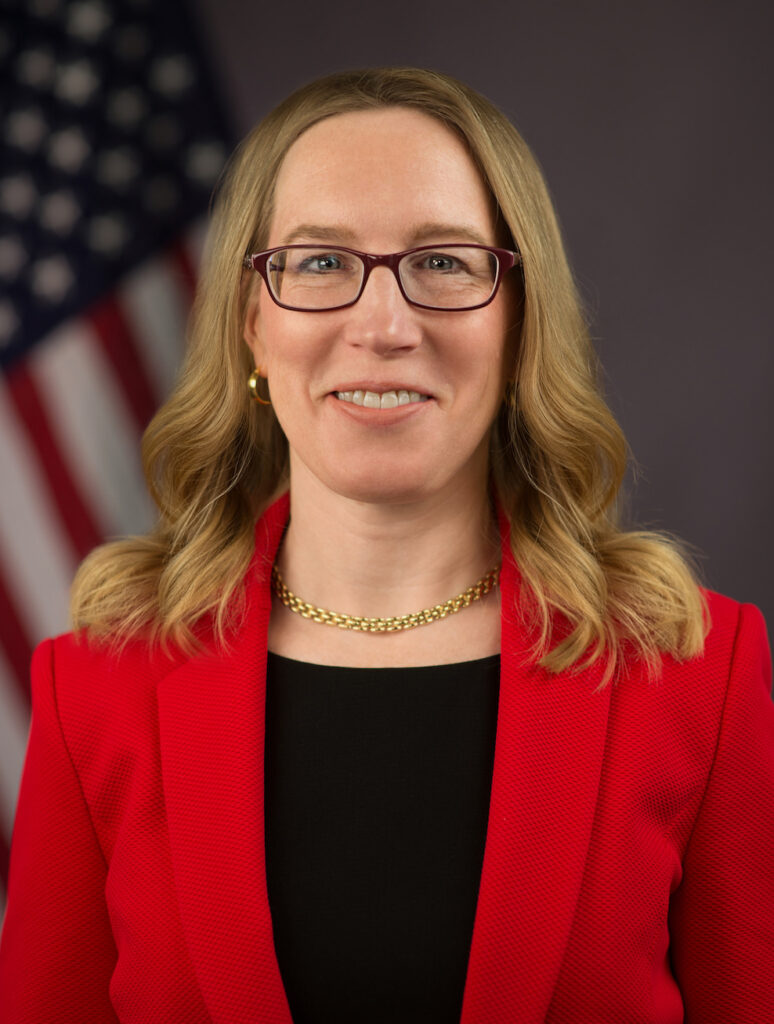The SEC issued a new report this week that is designed to provide a quick view of major trends affecting investment funds, using data aggregated from Form N-PORT filings detailing the assets of mutual funds, ETFs and registered investment companies.
The first edition of the Registered Fund Statistics report outlines key industry statistics and trends in portfolio holdings, flows, returns, interest-rate risk and other indications of the state of more than 12,000 funds with more than $26trn under management, according to an SEC announcement posted April 24.
“This new report will give the public a view into the registered fund industry. Investors, issuers, economists, academics, and the public at large benefit from such regularly published economic data,” according to a statement from SEC chair Gary Gensler.



The report will be updated quarterly using data that will be made available along with the 12 data sets already provided by the SEC’s Division of Data Analysis.
The announcement cites the analytics office of the SEC’s Division of Investment Management (DIM)as the source of the report, however, and of the data feed to be named Registered Fund Statistics.
“This report provides the public an unprecedented view of the composition and activities of registered funds,” said Tim Husson, head of the DIM’s analytics office. “We welcome feedback on the report, which we believe will assist the public dialogue on issues pertaining to the asset management industry.”
Stats show more growth in ETFs than mutual funds
Because it is based partly on non-public data, the first version of the report provides a uniquely sourced baseline to monitor future changes in the industry, though that data so far extends only for a single year between October 2022 and September 2023.
During that time, the report shows that the number of mutual funds, ETFs and closed-end funds tracked in the report grew by just .79% — but also showed that total net assets under management grew by 6.3% during the same period.
The total number of mutual funds being tracked took the biggest hit during that time, dropping 1.56% from 9,049 in October 2022 to 8,980 in September 2023, while increasing in total net assets from $17.8trn to $18.5trn during the same period – an increase of 4.04%.
The number of ETFs rose by 8.35% during the same period – from 2,850 to 3,088 – while total ETF net assets shot up 12.9%, from $6.37trn to $7.19trn.
The report, which is available for download here as a PDF, compares fund numbers and assets according to size, strategy, index status, asset class, distribution and other factors, and tracks net inflow and outflow by similar characteristics. It also tracks portfolio investments by fund type, asset category, and other characteristics.
Trends report, not policy reversal
It remains to be seen whether the report will help the DIM thaw its icy relations with the fund industry.
The chill in relations with the SEC has been a hot topic within the industry for more than two years, but SEC commissioner Hester Peirce highlighted the problem during the SEC Speaks conference earlier this month, slamming leaders of the commission for cultivating a culture she described as less interactive, more standoffish and less trustworthy in the eyes of the companies it regulates.

Executives in those companies, she said, have had a far greater need for guidance and information about new regulations during the past three years, but have far less confidence in the SEC’s ability or willingness to provide it.
The development of the Registered Fund Statistics report began during the two-year administration of former DIM director William Birdthistle, who stepped down in March and, fairly or not, got much of the blame from fund companies unhappy with what they said was an increasing tendency among SEC staff respond to requests for information with either silence or notice of impending examinations.
Birdthistle’s successor as head of the DIM, Natasha Vij Greiner, was a deputy director of the Examinations Division that would have been sending many of those notices. However, during her appearance at an Investment Adviser Association conference March 7 – one day before she replaced Birdthistle as DIM director – Greiner spoke extensively about the value to the SEC of an open and informative relationship with registrants.

She highlighted the positive impact she’d seen from efforts to inform registered companies about the intricacies of new regulations and provide tips on more efficient compliance through both direct guidance and general publications like FAQs and risk alerts.
“In addition to providing recommendations to the commission on rulemaking initiatives, the division staff actively engages with industry participants, providing technical guidance, and assistance on the interpretation and application of existing and new rules,” Greiner said during a panel session she led during SEC Speaks, an annual conference designed to allow SEC staffers to explain rulemaking and compliance directly to attorneys for fund advisers and boards.
No count of compliance-oriented publications is available, but other DIM speakers during the panel session cited instances in which they’d seen tangibly positive results with registrants after the publication of risk alerts, FAQs or other sources of information. None acknowledged the sense of alienation described by Peirce and other industry sources, but they did say it is common for DIM staff to offer compliance guidance to registrants in person at conferences and other individual and group meetings.
During the event Greiner praised DIM staff for a deep understanding of the asset management industry based partly on its constant review of “thousands of fund registration statements and other disclosure documents each year,” and called out the DIM’s analytics office in particular for its “deeply sound analytics and insight into the asset-management industry.”
Peirce slams SEC for answering compliance queries with silence, threat of enforcement
SEC insiders: Don’t self report, don’t ask SEC too many questions
ICI CEO blasts SEC for acceleration of “harmful” rulemaking
Gensler defends proposed AI rule, dodges questions about compliance
SEC staff advice on avoiding compliance trouble in 2023
Unprecedented board uprising spurred by fears about swing pricing’s impact on shareholders
Nearly 30 boards urge SEC to withdraw controversial swing pricing proposal
